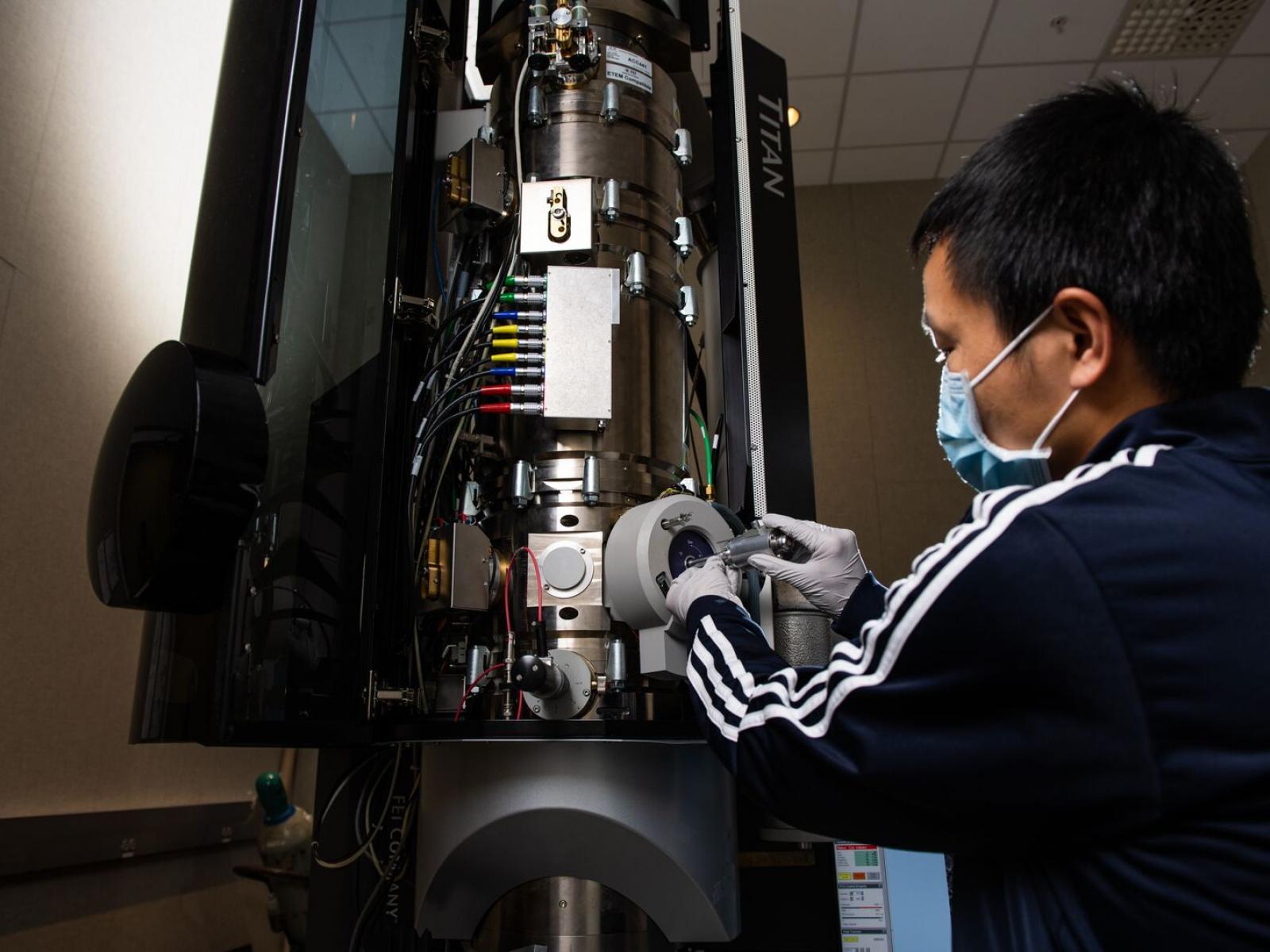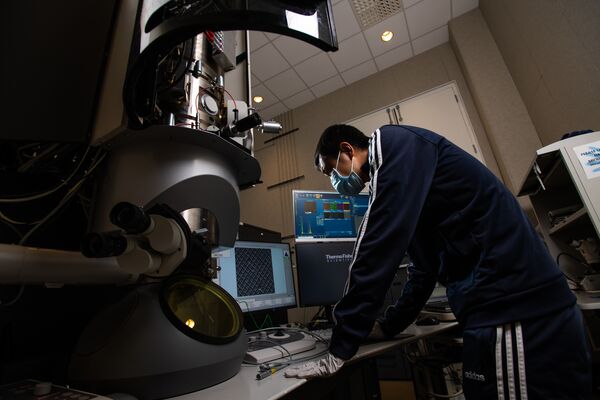In Situ Transmission Electron Microscopy (In Situ TEM)
United States

Photo by Andrea Starr | Pacific Northwest National Laboratory
A range of in situ capabilities are available for transmission electron microscopy (TEM) research in ESC. The in situ capabilities are enabled by TEM specialty holders, which allow application of external stimuli to the samples or exposure of samples to controlled environments while the samples are imaged under the electron beam. The available in situ capabilities include heating, electrical biasing, and gaseous or liquid environment holders. The in situ heating holders utilize resistive heating chips. Studies can be performed with either the Protochips Aduro heating holder or the Dens Solution Wildfire low-profile heating holder. Both holders can reach temperatures in excess of 1,100 °C. The Protochips Aduro heating holder provides a double-tilting capability, which is critical for structural studies of crystalline materials. The Dens Solution Wildfire holder has a low profile, enabling the high tilting that is critical for in situ tomography studies. Electrical biasing experiments are performed with the Protochips Aduro holder. The holder provides simultaneous biasing and heating stimuli. Research of materials under gaseous environments is performed with the Dens Solution Climate in situ holder. This holder uses a microchip cell that isolates the sample and the gaseous environment from the vacuum of the microscope via electron-transparent SiN windows. The microchip cell is capable of sustaining gas pressures up to 2 bar, with heating from room temperature to 1,000 °C. Gas delivery to the holder is controlled by a programable gas mixing unit. For studies in liquid environments, researchers use the Hummingbird liquid-flow in situ holder. The samples are placed in a microchip liquid cell, which is isolated from the vacuum of the microscope by electron-transparent SiN windows.

Research Application
- Supporting Catalysis Research: These in situ resources enable the study of structural and electronic properties of catalysts under realistic catalytic conditions. The structure of catalysts is investigated across different length scales down to the atomic scale. The topics of interest include understanding the stability and coarsening of catalyst nanoparticles, or surface reconstruction of catalysts in a working environment. Studies performed with the aberration-corrected Themis Z in ESC have the ability to resolve structural changes at the atomic scale and have the sensitivity to resolve single atoms. In addition to structural studies, electron energy loss spectroscopy is used to study the electronic properties and valance state of catalysts in working environments. Energy dispersive spectroscopy is used to study segregation and compositional changes of multi-component catalysts in working environments.
- Supporting Research of Electronic Materials: In situ capabilities are used to study materials under applied voltage or electric current. We apply these capabilities to research memresitive materials, which undergo structural transformation under applied electric bias. Such transformations are correlated with the electric properties of the materials and the device. Samples for the biasing experiment require preparation using focus ion beam milling methods.
- Supporting Research of Materials Synthesis: The in situ resources are used to study the mechanism of nanoparticle nucleation and growth in liquid environments. The experiments can be designed either under static or dynamic flow conditions, enabling control of chemical potential and composition within the liquid environment. The resolution in the experiments is normally limited by the liquid cell design, reaching down to the nm scale. Crystallographic analysis of the forming phases is performed using electron diffraction.